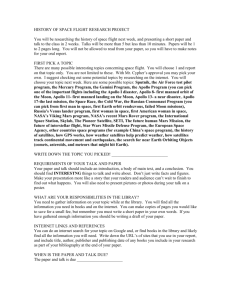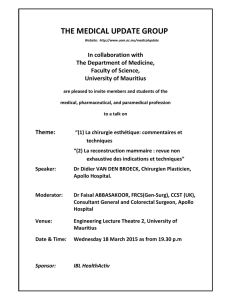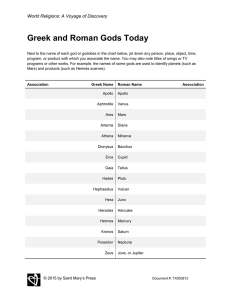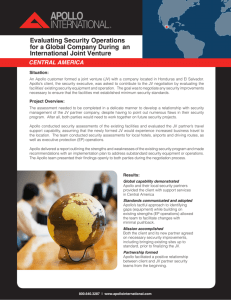Book review “Apollo, The Race to the Moon”
advertisement
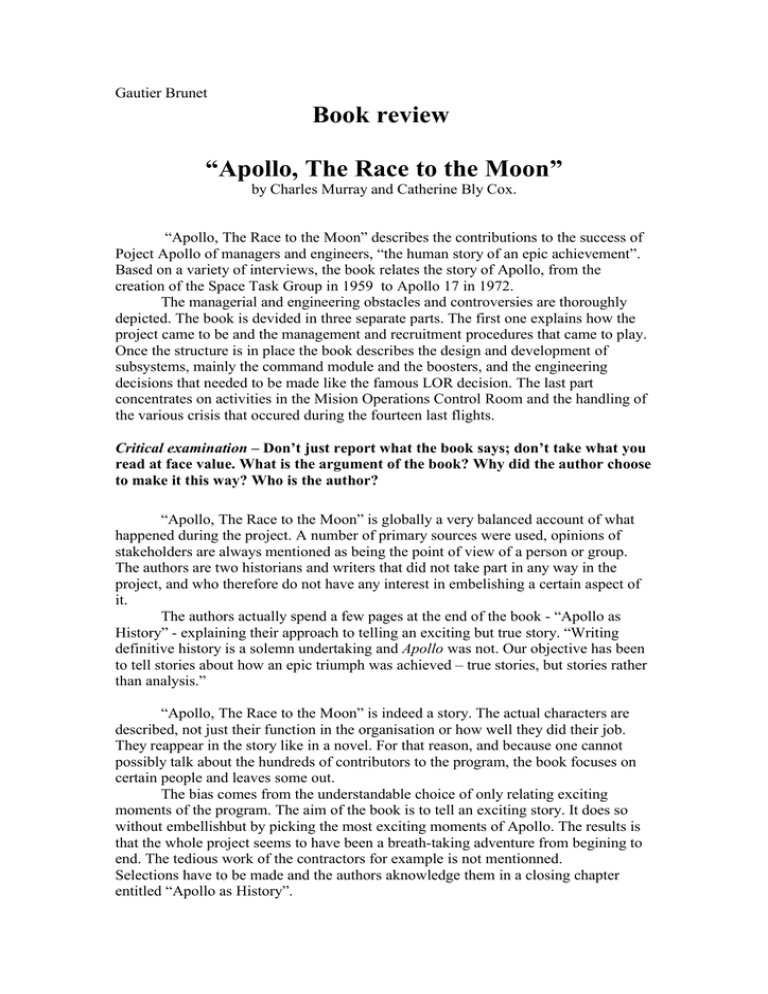
Gautier Brunet Book review “Apollo, The Race to the Moon” by Charles Murray and Catherine Bly Cox. “Apollo, The Race to the Moon” describes the contributions to the success of Poject Apollo of managers and engineers, “the human story of an epic achievement”. Based on a variety of interviews, the book relates the story of Apollo, from the creation of the Space Task Group in 1959 to Apollo 17 in 1972. The managerial and engineering obstacles and controversies are thoroughly depicted. The book is devided in three separate parts. The first one explains how the project came to be and the management and recruitment procedures that came to play. Once the structure is in place the book describes the design and development of subsystems, mainly the command module and the boosters, and the engineering decisions that needed to be made like the famous LOR decision. The last part concentrates on activities in the Mision Operations Control Room and the handling of the various crisis that occured during the fourteen last flights. Critical examination – Don’t just report what the book says; don’t take what you read at face value. What is the argument of the book? Why did the author choose to make it this way? Who is the author? “Apollo, The Race to the Moon” is globally a very balanced account of what happened during the project. A number of primary sources were used, opinions of stakeholders are always mentioned as being the point of view of a person or group. The authors are two historians and writers that did not take part in any way in the project, and who therefore do not have any interest in embelishing a certain aspect of it. The authors actually spend a few pages at the end of the book - “Apollo as History” - explaining their approach to telling an exciting but true story. “Writing definitive history is a solemn undertaking and Apollo was not. Our objective has been to tell stories about how an epic triumph was achieved – true stories, but stories rather than analysis.” “Apollo, The Race to the Moon” is indeed a story. The actual characters are described, not just their function in the organisation or how well they did their job. They reappear in the story like in a novel. For that reason, and because one cannot possibly talk about the hundreds of contributors to the program, the book focuses on certain people and leaves some out. The bias comes from the understandable choice of only relating exciting moments of the program. The aim of the book is to tell an exciting story. It does so without embellishbut by picking the most exciting moments of Apollo. The results is that the whole project seems to have been a breath-taking adventure from begining to end. The tedious work of the contractors for example is not mentionned. Selections have to be made and the authors aknowledge them in a closing chapter entitled “Apollo as History”. Sources – What evidence is used to support the argument? (Read the footnotes!) How strong is this evidence? How directly related to the events being discussed? Is counter evidence presented and discussed? It is based on a number of primary and secondary sources. Primary sources include: Robert Sherrod's archive, interviews from NASA history offices in Washington and Houston. The authors conducted interviews in the late 80's with 157 people from Apollo and used books written about Apollo, such as This New Ocean: A History of Project Mercury, by Swenson, Grimwod and Alexander (1966); Chariots for Apollo: A History of Manned Lunar Spacecraft by Brooks, Grimwood and Swenson (1979), Stages to Saturn, by Bilstein, (1980), Moon port: a History of Apollo Launch facilities and Operations, by Benson and Faherty (1978) and The History of Manned Space Flight, by Baker (1982). All of those are secondary sources. The variety and strenghth of those sources make the book “perhaps the best general account of the lunar program” according to Launius. The number of interviews allows the author to cross-check information, establish truths and bring out areas of disagreement. If conflicting opinions do arise, both points of view are presented and it is up to the reader to figure out why such disagreements might arise. Relevance to larger Apollo project – Relate the topic/argument in the book into the larger themes of the course. Is this piece of work central or peripheral? How does it bear on our larger understanding of Apollo? Are Launius’s five categories useful here? This book is central in that it describes in great detail a multitude of engineering and managerial trade-offs that were made during the program, at all levels of management. It is one of the five examples Launius gives to populate the Apollo technology category. Indeed the book discusses at length engineering and managerial like the Apollo 1 fire and Apollo 13, and allows the reader to grasp the technical problems decision makers were facing at the time. It is easy now to think that using the LEM as a lifeboat was a logical thing to do since the C.S.M. was damaged. Cox and Murray's book reveal the information that Chris Kraft was receiving from a variety of groups, nearly minute-by-minute into the crisis. It explains step by step the resulting decisions and allows the reader to penetrate deeply into the strange place that Mission Operations Control Room was at the time. Discuss an engineering or political decision – Identify a moment of decision discussed in the book. Was this an engineering or political decision? If an engineering one, what were the technical and non-technical considerations made when making the decision? For a political decision, how did technical considerations enable or constrain the decision? What does your analysis of the decision tell us about the nature of engineering on a large project like Apollo? Geoges Low was without doubt a great contributor to the accomplishment of Kenndy's challenge before the end of the decade. His decision in 1968 to go to send Apollo 8 to the Moon was one of his many steps taken to prevent the schedule from slipping into the 70's. The previous schedule had planned that Apollo 8 would be in low Earth orbit. In the summer of 1968, the planned progression was: A. Unmanned Saturn V flights(Apollo 4 and 6). B. Unmanned test of he LEM (Apollo 5). C. Manned mission (Apollo 7, scheduled for the fall of 1968). D. Manned mission using CM and LEM in Low Earth Orbit (end of 1968). E. Manned mission using CM and LEM in High Earth Orbit (early 1969). F. Mission to the Moon (middle of 1969). G. Lunar Landing (end of 1969). Low's problem was that the LEM would not be ready until February 1969. Waiting until then to go on with the following missions in the planned order meant pushing back the lunar landing in 1970. If the lunar landing was to be accomplished before the end of the decade, as President Kenndy had promised, the schedule had to be rearranged. Low's idea was to use the remainder of 1968 to gain experience in fields that did not require a LEM like translunar navigation, lunar orbit, communications, and thermal conditions. That meant switching the D and E missions and redesigning that E mission to a lunar orbit without LEM. Even if it seems logical from a scheduling point of view, going to the moon so soon was a very audacious step. In August 1968, Low was asking to send people to the Moon the same year at a time when not a single manned mission had been launched. Apollo 7 was scheduled in October, and hopefully it would prove that the C.S.M. could go to the Moon. Even so, Apollo 8 would be the first manned Saturn V. The previous launch of a Saturn V had unveiled multiple problems, including a potentially disastrous pogo. Furthermore, the mission required many components to be ready before their planned deadline. Fortunatly, navigation and Control Center software would be ready by then, even if it was not obvious initially. “Geez, I've heard some stupid things, but that's crazy” thought at first Jerry Bodstick, head of the Flight Dynamics Branch. After two days of briefing, Mueller acknowledged that the decision was sound from a technical point of view and pointed out that the “greatest single advantage” of flying this audacious mission was the way it had galvanised people. Indeed, according to Pr. Battin, “Apollo 8 was a dramatic milestone. [] To many of us who were part of the Apollo program, it was the most exiting of all.” However, the risks were real. “you and I know that if failure comes, the reaction will be that anyoe should have known better than to undertake such a trip at this point in time”, Mueller warned him. A striking feature in all the great decisions were that they all included a substancial amount of risk. They are all based on a combination of quantitative and qualitative arguments. It appears that they are the result of the influence of a number of stakeholders and cannot be justified by equations. A great part of it was intuitive and qualitative. Word count: 1536 – 184 = 1352.
